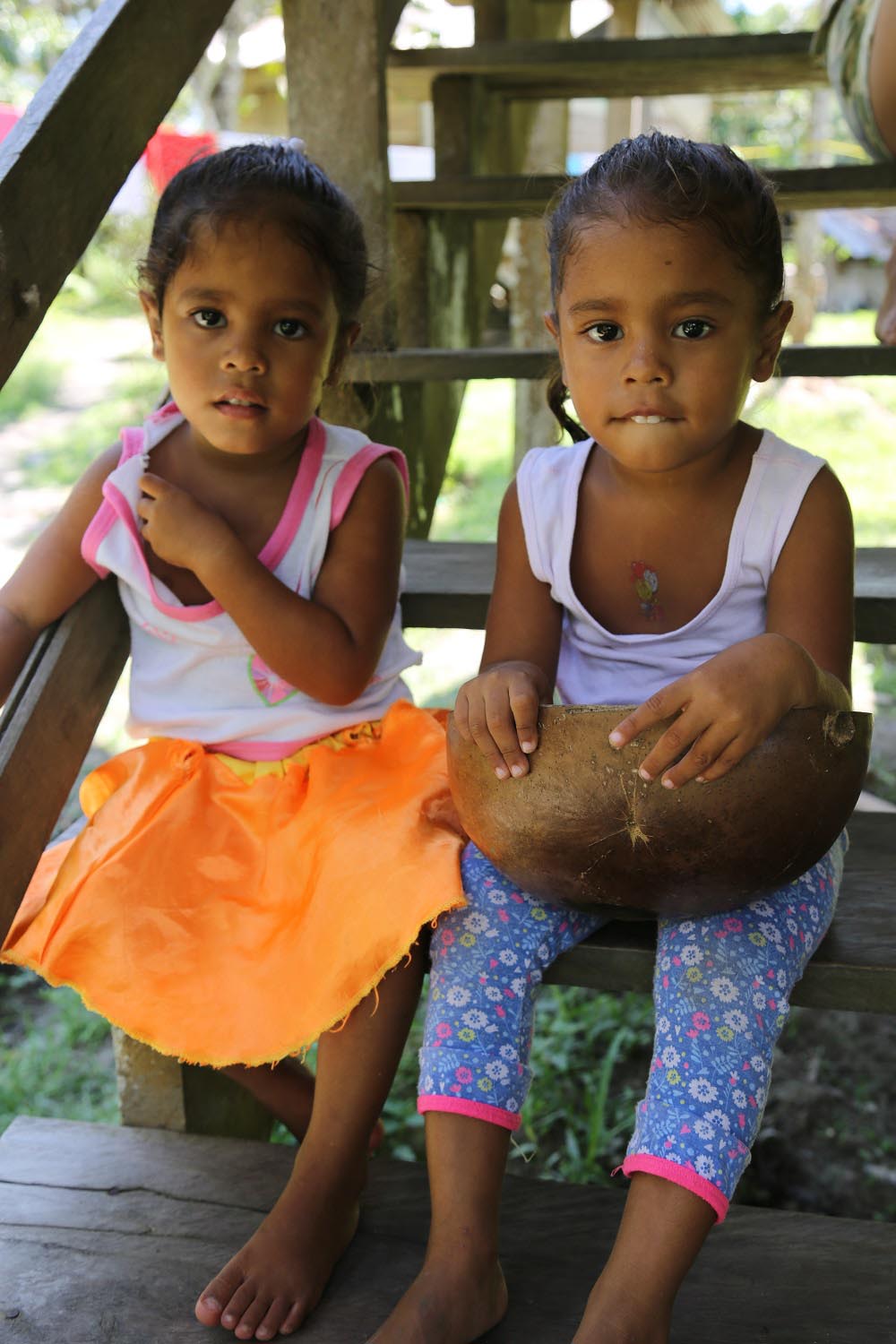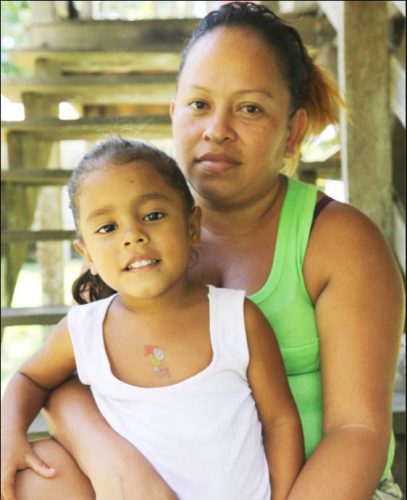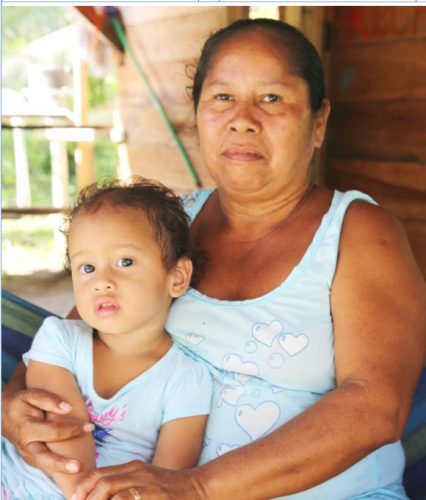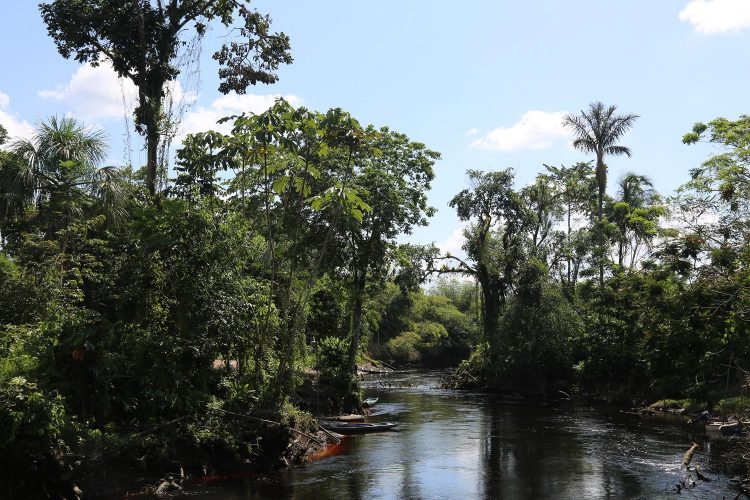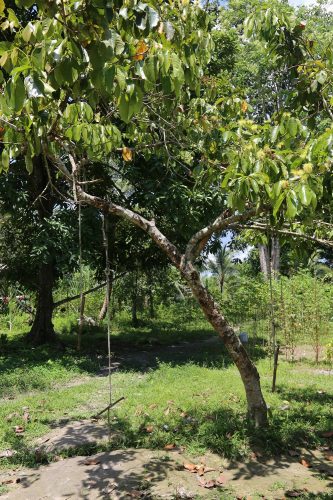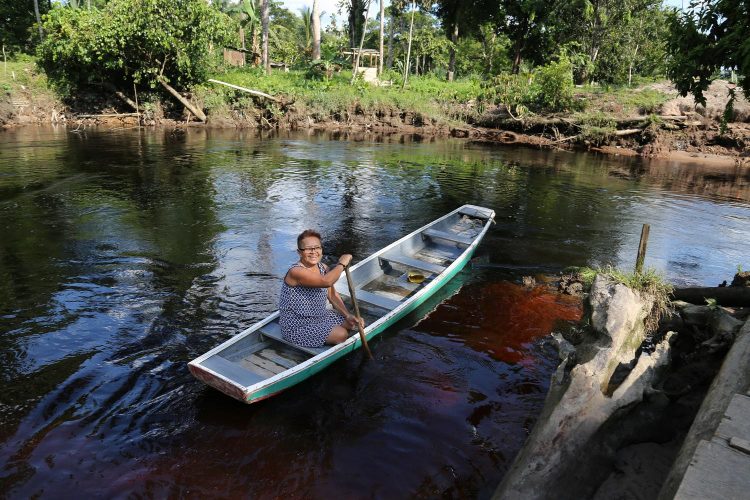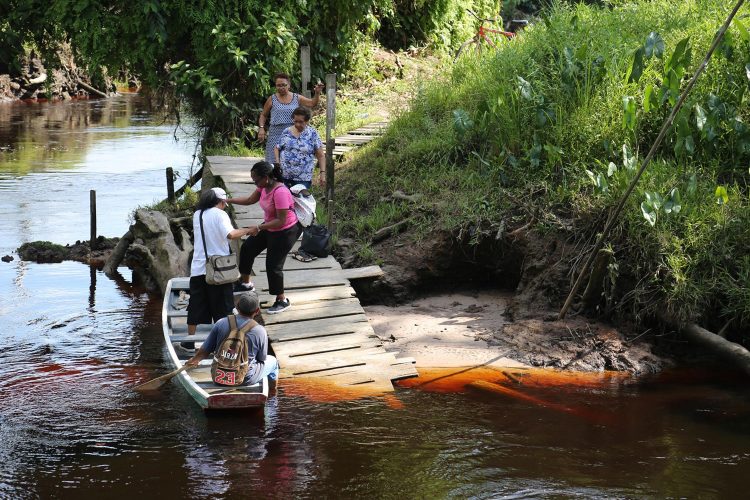Lower Kara Kara sits on the outskirts of Linden among lush grass, trees and the rippling black waters of the Kara Kara Creek. The village is home to approximately 300 persons, most of whom are indigenous or of indigenous ancestry.
After arriving from Georgetown at the Linden Car Park, one takes a taxi to get to the end of Speightland and crosses the Kara Kara creek in a canoe. Alternatively, you can have the taxi take you along the longer route into the village but feeling the call of the creek, I chose the first.
At Speightland I asked one of the villagers how to get to the other side. He said his name was Clint and he was well-known in the area. A beaming Clint pointed to three canoes and said if I could paddle, I was welcome to borrow whichever one I wanted; that turned out to be a joke. As I got into the tiny boat, the Cola-coloured water seeped over the side but Clint calmly reassured me it was nothing to worry about. In a few minutes, which appeared longer, I arrived.
Francine Stellingburg was already at her door awaiting my arrival, as Clint had called her from the boat.
Stellingburg is a cook who works in the interior close to Bartica. She’s the mother of five children and sometimes she’s away from them two or three months at a time; she was on a break when I visited. She explained that when she’s away her mother takes on the responsibility of taking care of her children. One child attends Regma Primary, while two older ones are at Mackenzie High and New Silver City Secondary over in Wismar; her two youngest are three-year-old twins, Aneisha and Alianna.
Every day, whichever villager is crossing with a boat would take the school children over. At times Stellingburg or her mother take them across; they seldom paddle themselves across. Because persons leave the village for work and school a few boats are moored on the other side in Speightland for them to get back over with; just one or two are left in the village.
There is a small shop in Speightland and persons paddle across for groceries; for bulk purchases, persons walk to the Mackenzie Market and take a taxi back.
There is no potable water in Lower Kara Kara so the people depend on the rain for drinking and cooking purposes and get water from the creek for washing and watering plants. Stellingburg explained that she adds some bleach to the water when she washes whites. She further shared that there have been times in the dry season when they have no water and have to bring jars of water over from Speightland. This does not happen often, but when it does the children sometimes drink it. She tries to avoid this because though they do not get sick, she ends up vomiting so just to be on the safe side, she is extra careful that they do not drink it.
Although the land is fertile, she does not have much time to plant; she grows bananas and plantains for home use. In one corner of her yard, is a calabash tree. This comes in handy as most families use the calabash as an eating utensil.
Nearby, Marcia Stellingburg sat rocking her one-year-plus granddaughter Myra Culpepper in a hammock and feeding her from a bottle. She likes the serenity of Kara Kara and boasts about the black water creek that is always running and full of fish. She and her husband plant cassava, bora, carilla, eddo and bananas in their backyard which they tend to every day. These are usually for home use and they usually add to the dishes made with these, fish from the creek nearby. Residents use rods to catch fish as cast nets tend to get entangled on roots and other sticks in the water.
Marcia recalled that when she was younger and growing up, life was not as easy as it is today. Pointing to a breadfruit tree in her yard, she said, that with the restrictions on wheat flour, she had it so much, that she does not really like it anymore. “My mother would boil, fry and stew or make pancakes from it. We used to mix the breadfruit with rice flour to make the pancakes. We used to have foo foo made from yam and sometimes my mother used to make fish broth that we eat with cassava bread. I remember we used to go to Shopping Plaza, right where Courts is now and used to line up just to get contraband goods. We used to reach there for 7 in the morning, me and my mother. Sometimes we does get through till 4.30 in the afternoon. Sometimes we wait whole day and ain’t get nothing and then we have to come back home and cook breadfruit,” she recalled.
The men in the village mine, farm, fish or do logging or carpentry. Marcia’s husband works with Jettoo Logging Company in nearby Mabura.
Asked about reptiles, Marcia said that only a month ago, the men caught an anaconda in the area. However, she said that was a rare occasion.
Speaking of the creek, Marcia said that children in the area know to swim. Her grandchildren, she said, love the water and she teaches them uses sticks and other floaters to swim. She remembered when she was learning at eight years old, her uncle would throw her out to the middle of the creek and when she was going under he would jump in for her. He did this on several occasions until she learned to swim.
Marcia wishes there was a bridge for the villagers especially the children to have easier access to school. She said this was promised by different political parties in the run up to elections, but now that the elections are over, it seems they have forgotten about it.
Evelyn Duggin called out to me as I was walking along the bank of the creek to get some photos of the alluring water. She is not fully mobile, having had a stroke four years ago.
Duggin grew up at Wismar, in an Amerindian village called Buck Hill; she moved to Lower Kara Kara 28 years ago after meeting her husband to be.
She does embroidery, fabric painting, cake decorating, makes crab oil and at one time did knitting before the stroke. The crab oil she makes is for personal use. She makes for herself and other relatives. The oil, she noted, can be used to get rid of marks, as a mosquito repellant and mothers use it for “thrush” for newborn babies.
Treating me and another visitor to her cashew wine, which she had set since June, she began to explain the process of the making of the crab oil. An elderly neighbour who recently died, she said, used to pick up seeds from the crabwood tree to make the oil and one day Duggin asked her about the making of the oil; this was ten years ago. After gathering a tub or sometimes two of the two gallons buckets of seeds, she boils them and then leaves them to rot for a week and a half. She then cuts the seeds and digs out the insides, which she kneads into a dough. She then places this in a pan in the sun and the oil drains out.
She said the crabwood tree was there when she moved in all those years ago.
Duggin said she hated farming as her Arawak father used to have her and her siblings in the backdam all the time and even at midnight, when he was drunk. Her husband, when he is not taken up with carpentry, plants banana and plantain suckers. Just recently, in the freak storm, they lost some of their suckers.
Sometimes the villagers of Lower Kara Kara experience flooding when the creek rises, but it is not too often or too much. Those with crops in the lower areas feel the brunt of the floods.
There used to be mining further up in the creek but because of sand washing into the creek when the rains came, she has not seen mining in years.
Duggin also wishes for a bridge as well as streetlights for a street in Speightland that leads to the waterfront; she hopes GTT can install telephone lines as villagers had applied almost five years ago.
Relatives then arrived to check on Duggin and her sister, Veronica, offered to take me back across. While I held the boat steady on both sides as she instructed, she paddled to the other side.
